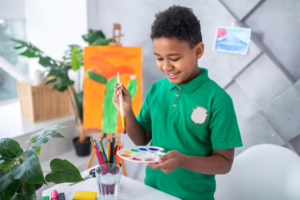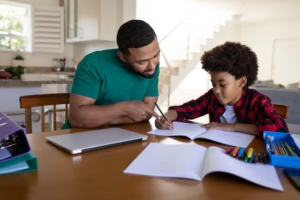Creating a successful homeschooling plan

Homeschooling isn’t just about academics; it is a launchpad for the imagination. By breaking free from traditional classroom constraints, homeschooling empowers children to become the innovators of tomorrow. According to Age of Learning, a leading education technology innovator in the United States, there has been a dramatic 150 percent increase in online searches for “homeschooling” as more parents desire the home-based learning program. One advantage of homeschooling is the ability to create a tailored education that not only covers traditional subjects but also fosters your child’s imagination and curiosity.
Here’s how to foster creativity in homeschooled children:
Foster open-ended learning
Journaling, storytelling, and problem-solving puzzles are great ways to spark creativity. These activities are open-ended, so students can go wild with their ideas. Encourage out-of-the-box thinking by presenting tasks like building a structure with limited materials or writing a story with specific rules. Discuss different solutions together and help them evaluate options and make decisions. This boosts critical thinking and problem-solving skills while nurturing creativity.
Integrate artistic expression Art ignites children’s imagination by allowing them to communicate their thoughts, experiment with concepts and see the world through unique lens. Try incorporating visual art like painting and drawing or performing arts like music and dance as this enables children to express themselves freely and delve into their imaginations. Encourage them to write about personal experiences, fantasies or observations as this fosters language development and imagination.
Art ignites children’s imagination by allowing them to communicate their thoughts, experiment with concepts and see the world through unique lens. Try incorporating visual art like painting and drawing or performing arts like music and dance as this enables children to express themselves freely and delve into their imaginations. Encourage them to write about personal experiences, fantasies or observations as this fosters language development and imagination.
Establish a learning friendly space
If you want to boost your child’s creativity, transform the learning space into a creative haven. Set up a cool spot for arts and crafts and fill it with art supplies, inspiring pictures, and anything that sparks their imagination. Put everything they need within reach and decorate with inspiring stories. A tidy and exciting place to learn can ignite your child’s inner artist.
Let them lead
Let your children follow their passion.  Give them the freedom to work on projects they’re excited about. Whether it’s writing a thrilling adventure story or building a model clay house, these hands-on experiences help them learn to think creatively and solve problems on their own. Be their biggest fan and offer support, but let them lead the way.
Give them the freedom to work on projects they’re excited about. Whether it’s writing a thrilling adventure story or building a model clay house, these hands-on experiences help them learn to think creatively and solve problems on their own. Be their biggest fan and offer support, but let them lead the way.
Use diverse resources
Keep learning exciting by mixing up different materials. Try blending books, multimedia content and real-world experiences to make learning more engaging and stimulate creative thinking. If your child is studying animals, let them read a book about their habitats or watch a documentary about their behaviour. This multi-sensory approach will create a rich and memorable learning experience.
Celebrate creativity
Recognise and commend your child’s creative accomplishments. Hang their artwork in the house or share their stories. Seeing how proud you are will give them a huge confidence boost and will inspire them to persist in exploring their artistic potential. Avoid generic comments and instead highlight particular aspects of their work that demonstrate their talent and hard work.
Embracing homeschooling is a significant commitment, but with a well-thought blueprint, it can lead to remarkable educational outcomes. By nurturing creativity to your young one, you’re not just preparing them for the future, you’re empowering them to shape it. Remember, the key to success lies in patience, perseverance and a genuine passion for your child’s growth. Every child is a unique artist waiting to be discovered.




